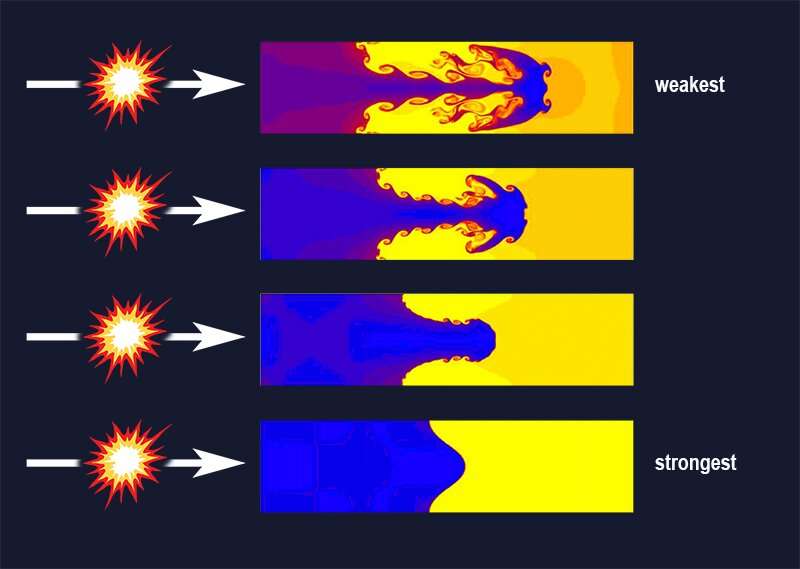November 13, 2019 report
Rapidly compressing lead to planetary-core type pressures found to make it stronger than steel

A combined team of researchers from Lawrence Livermore National Laboratory in the U.S. and Atomic Weapons Establishment in the U.K. has found that rapidly compressing lead to planetary-core type pressures makes it stronger than steel. In their paper published in the journal Physical Review Letters, the group describes how they managed to compress the metal so strongly without melting it.
Defining strength in a material is difficult. Strength can refer to a material's ability withstand bending or breaking under certain conditions. Making things even more complicated is that the strength of any given material can change under varying conditions—such as when heat or compression are applied. In this new effort, the researchers showed just how difficult it can be to nail down how strong a material is—in this case, lead.
Lead is not very strong. Pressing a fingernail against a car's battery terminal is enough to create indentations, for example. But the researchers with this new effort report that the metal can be strengthened considerably by exerting extreme pressure.
As part of their effort to better understand the nature of strength in materials, the researchers subjected a piece of lead approximately the size of a pea to a barrage of lasers courtesy of the National Ignition Facility. In all, they fired 160 beams at the sample while simultaneously testing its strength by watching tiny ripples form on its surface. The researchers took this approach because it allowed them to control the temperature of the lead by varying the shape of the laser pulses.
Normally, squeezing a metal makes it hot—it does not take much heat to make lead melt. By using the lasers, they were able to keep the lead sample below its melting point as they gradually increased pressure over tens of nanoseconds. To measure the sample as the pressure increased, the team used X-rays to watch as ripples formed on its surface due to compression transiting through it. By measuring the shape and length of the ripples, the researchers were able to measure viscosity, flow and strength of the material as it deformed.
The researchers report that when compressed to approximately 400 gigapascals, the sample was measured at approximately 10 times as strong as high-strength steel under ambient conditions.
More information: A. Krygier et al. Extreme Hardening of Pb at High Pressure and Strain Rate, Physical Review Letters (2019). DOI: 10.1103/PhysRevLett.123.205701
Journal information: Physical Review Letters
© 2019 Science X Network





















